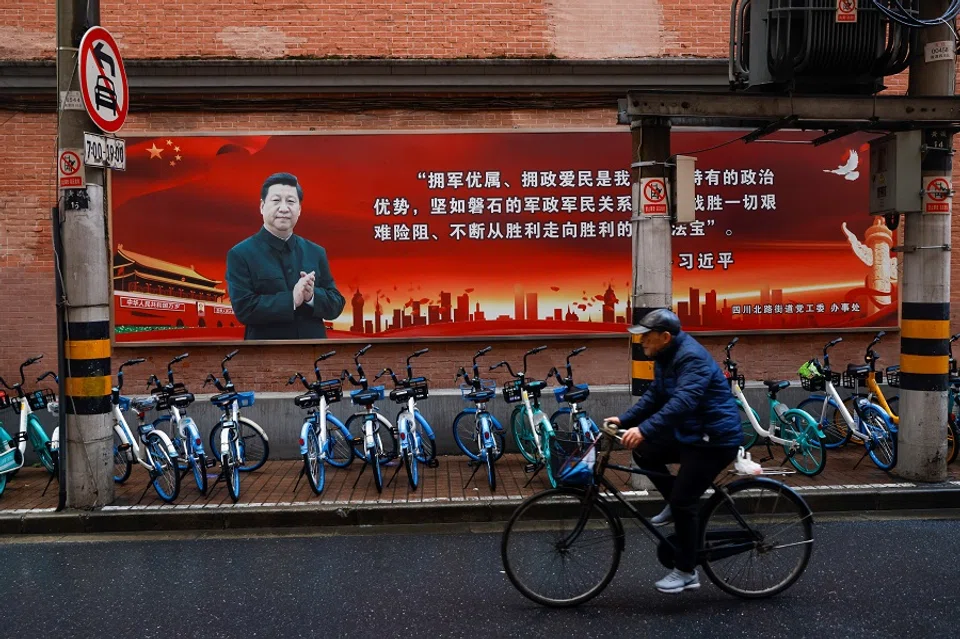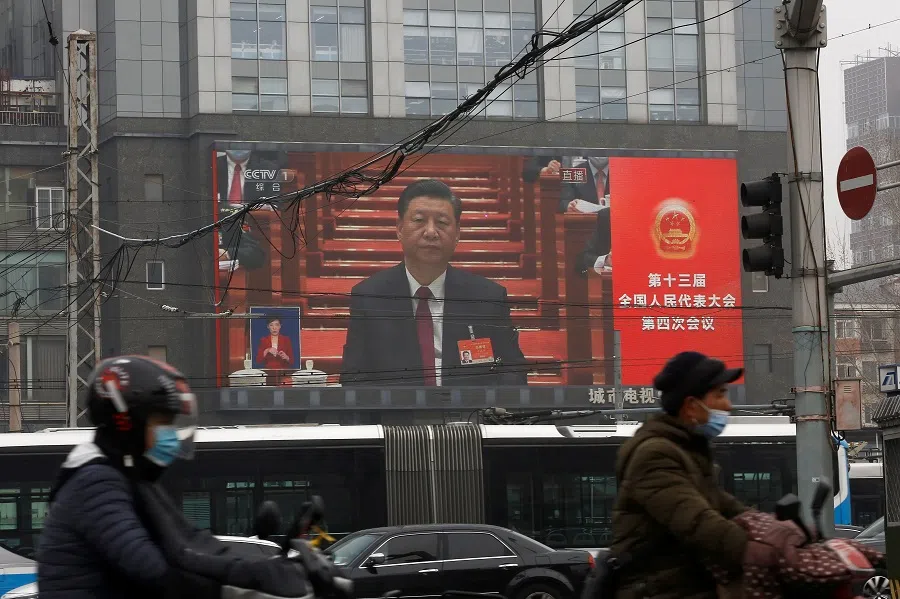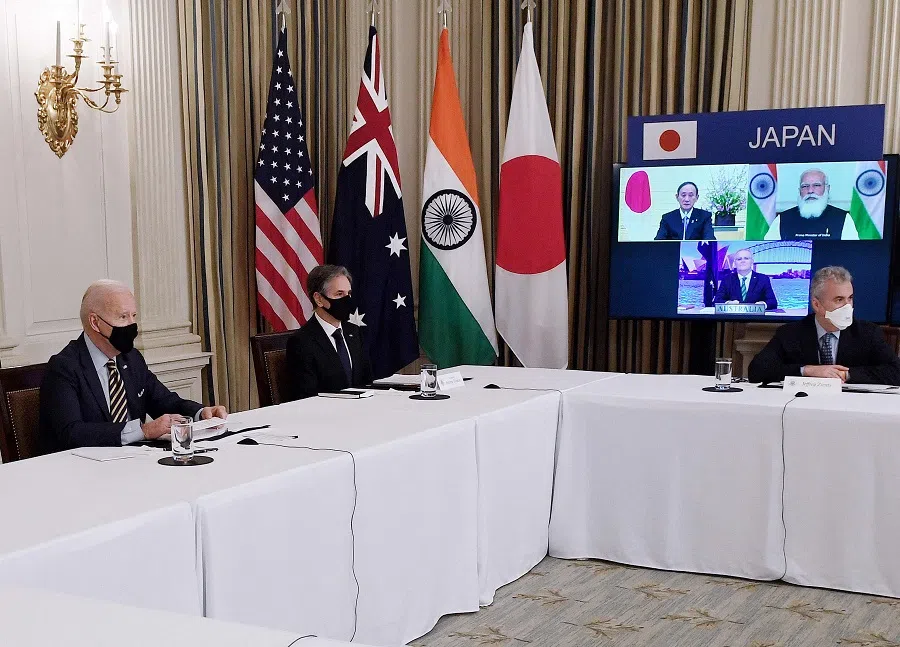The US gets it wrong again
Rishi Gupta gives a critique of the strategy paper "The Longer Telegram: Toward a New American China Strategy", by "Anonymous", which was recently published by the Atlantic Council. He says that judging from the paper and several other important geostrategic content released by the US recently, the US has not read the situation in China and its leadership correctly, and hence has a skewed understanding of how it can draw strength globally to compete with its "most serious competitor".

History repeats itself, but challenges do not stay the same. The end of the Second World War led to a period of Cold War rivalry between the two eminent superpowers, the US and the Soviet Union. While this was just the start of a long drawn out race for supremacy, US diplomat George Kennan sent a "long telegram" to the US Secretary of State from Moscow, advocating a policy of containment of the USSR.
In the main, the telegram stated that there could be no peace with the USSR as the latter lived in an "antagonistic" world of "capitalist encirclement". The cable became a strategic shorthand for American policymakers for decades and generated worldwide attention. With all its assumptions, the cable was correct in pointing towards an emerging ideologically divided world.
75 years later, the "long telegram" has become somewhat "longer" with a shift in challenge from the USSR to China. The strategy paper "The Longer Telegram: Toward a New American China Strategy", by "Anonymous", was recently published by the Atlantic Council. The author is described as a "former senior government official with deep expertise and experience dealing with China".
The paper's underlying argument is that "the single most important challenge facing the United States in the twenty-first century is the rise of an increasingly authoritarian China under President and General Secretary Xi Jinping". Further, the paper states that China's rise now impacts every aspect of the US national interest "because of the scale of its economy and its military, the speed of its technological advancement, and its radically different worldview than that of the United States."
These, in fact, leave no doubt as to Xi's compelling and formidable vision and leadership.

Xi-phobia
The author jumps to the conclusion of democratic peace and unity between the US and the world: "Xi is no longer just a problem for US primacy. He now presents a serious problem for the world of the democratic world." But the question one must ask is: What does the democratic world think of the US's views?
The report aptly sounds the urgency for the US to develop an effective China strategy in the way that "China has long had an integrated internal strategy for handling the United States". In this endeavour, the author rightly points out a critical lacuna in the US's China strategy: the search for reliable strategic partners. Tangible policy frameworks to contain China have been advocated in the last two decades by the Bush, Obama, and Trump administrations. But these policies' weakness remains in the search for reliable allies in an acutely competitive world order where friends change but interests do not.
In the past century, the Soviet Union similarly posed a challenge to the US, but to a lesser extent, as it was a fragmented country. Its ethnic and cultural divides were self-destructive. While containment of the USSR was a practical solution then, containment of China will not solve the US's problem now.
What might work against an assertive and fast-moving China are China's inherent vulnerabilities. The report mentioned a total of 25 strategic vulnerabilities and a large chunk refers to the changes that Xi has implemented since 2012. But the Communist Party of China (CPC) revolves around the powerful leadership of Xi, who, since his arrival, has spearheaded various global strategic plans. The Chinese economy has been redefined on technological and information grounds, and internal vulnerabilities are addressed under tight-knit surveillance and a defined strategic plan for the economic development for the next three decades; China has paid heed to political and ethnic fragmentation and done its homework on cracking down on anti-China voices. These, in fact, leave no doubt as to Xi's compelling and formidable vision and leadership.

The report goes on to say that, unlike his predecessors, Xi has spoken about China's national interests through "strategic endpoints" that are visible, from "island reclamation in the South China Sea; BRI; the Made in China 2025 Strategy, a plan for Chinese innovation, technology, and AI; the development of its first overseas military bases; the pace of military expansion, modernisation, and reorganisation to enable the multiple service arms of the People's Liberation Army (PLA) to engage in joint operations to 'fight and win wars'; a marked strategic realignment with Russia; the development of new Chinese diplomatic initiatives to take the lead on global issues where China didn't necessarily have any direct national interest at stake; and the beginnings of the articulation of a new conceptual framework for a post-US global order."
Incidentally, the [Indo-Pacific] strategy was launched after the Belt and Road Summit in May 2017 in China, which saw leaders around the world attending and seeking Chinese investment.
Countering China with the Quad and the Indo-Pacific strategy
To counter the threat of China's rise, the report provides ten "basic organising principles" for a long-term solution beginning with "US strategy must be based on the four fundamental pillars of American power", i.e., military power; ensuring that the dollar remains the global reserve currency and the "mainstay of the international financial system"; global technological leadership; and the values of individual freedom, fairness and the rule of law. The report adds that the US must address domestic, economic and institutional weaknesses, and anchor its China strategy in national values and interests. In addition, coordinating and cooperating with the US's allies, especially in the Indo-Pacific region, is a must.
In 2007, Japan shaped the underpinnings of the Quadrilateral Security Dialogue (Quad) involving Japan, the US, Australia and India, in what some construed as a united democratic front against an undeclared rival, China. In 2018, then-Prime Minister Shinzo Abe said in a speech at the UN, "What I call the 'Free and Open Indo-Pacific Strategy' derives from our desire to preserve the blessings of open seas, together with these very countries, as well as the United States, Australia, India, and others, and indeed, all countries and peoples who share the same intent."
In 2019, the US released their Indo-Pacific Strategy declaring the Indo-Pacific as one of the critical tenets of the US's national security and economic growth. It added that the strategy focuses on three pillars: economics, governance, and security, and "outlines U.S. activities in each of the three pillars, covering longstanding efforts as well as new programs that have been added since the launch of the strategy in November 2017." Incidentally, the strategy was launched after the Belt and Road Summit in May 2017 in China, which saw leaders around the world attending and seeking Chinese investment.

Against this backdrop, countering China has been at the heart of the Indo-Pacific strategy, with the view to expanding its reach to ASEAN and other countries aside from the Quad grouping of the US, Australia, Japan and India.
With the virtual meeting of Quad leaders on 12 March, the Quad has been elevated to the summit-level within a year of the Quad foreign ministers meeting in 2020. While the grouping does not align on any single agenda to contain China, its multi-sectoral cooperation has not gone down well with China.
Last year, the Quad navies held a joint military exercise (the Malabar exercise) in the Indian Ocean, sending a symbolic message on the freedom of navigation, maritime surveillance and security to China in the Indian Ocean and beyond. Taking a step forward, the Quad leaders' meeting is the first of such kind in Indo-Pacific's evolution since 2007. However, not one country raised the China issue during the summit. Even the Australian prime minister said that there was no reason for China to object to the meeting.
During the summit, a united fight against Covid-19 was on the priority list and India was given the responsibility of playing a critical role to "help end Covid-19". In a joint op-ed in the Washington Post, the leaders of the Quad countries said, "We pledge to expand and accelerate production in India of safe, accessible and effective vaccines. We will partner at each stage to ensure that vaccines are administered throughout the Indo-Pacific region into 2022."
The second aspect of the Quad shall be read with the trade war between China and the US, especially against the backdrop of the Trump Administration's decision to effectively ban Huawei in the US market in May 2019. The decision had seen a fiery exchange between the two countries. China responded with a threat to curb the export of rare earth minerals required for high-tech manufacturing, especially in mobile chips, aviation and defence products, including fighter jets, missile guiding systems etc. At present, more than 80% of rare earth minerals to the US are imported from China. With China having the largest reserves of rare earth minerals, a controlled export would considerably damage the US. Importantly, these 17 rare earth minerals are available in the Indo-Pacific region, with India holding about 6% of their global reserves. Still, the amount of exploration is far lesser than in China. Therefore, the Quad may provide a counterbalance to Chinese threats to the US for blocking the supply chain of rare earth minerals.

Interim National Security Strategic Guidance
With a new administration in place under President Biden, the strategy discussions in the "Longer Telegram" paper will have to stand the test of time. Within 40 days of the new presidency, the Biden administration released an "Interim National Security Strategic Guidance" to address "a global pandemic, a crushing economic downturn, a crisis of racial justice, and a deepening climate emergency." Most of the approaches discussed are a turnaround from the Trump administration's major decisions. However, among important challenges, the Guidance focuses on "a world of rising nationalism, receding democracy, growing rivalry with China, Russia, and other authoritarian states."
While the Biden administration is upping the ante on China, Russia does not appear in the list of potential allies in any form. However, a fifteen-time mention of China in the Guidance does suggest that the US has China strongly in its sights in its strategic planning. Meanwhile, it remains to be seen what President Biden's course will be to address the China challenge away from Trump's "China, China, China".
...isolating and halting China's "authoritarian" rise and a vocal pushback against human rights violations in Tibet and Xinjiang may work only in principle.
US's unrealistic strategic plans
The "Longer Telegram" paper presents Russia in a new light in suggesting that the US must rebalance its relationship with Russia to halt Moscow from drifting "fully into China's strategic embrace" as it has been the "single greatest geostrategic error of successive US administrations".
No doubt, an alliance with Asia-Pacific countries and others may effectively help the US unite and present a liberal democratic front against China, but rebalancing with Russia will give an extra edge to the US. In practice though, it is not an easy counterbalancing strategy for the US to implement. The US policymakers understand that Russia will not like to play to the tune of a liberal world order led by the US. The Russian view of the world is not entirely democratic and liberal. Also, Russia-China interdependence/cooperation in trade and defence manufacturing will surpass all other considerations in a strategic world, especially when Russia stands as a gateway for Chinese goods to Europe. Therefore, Russia, as an ally for the US, may be too unrealistic.

To conclude, the measures suggested in the "Longer Telegram" paper are impractical on two fronts.
First, isolating and halting China's "authoritarian" rise and a vocal pushback against human rights violations in Tibet and Xinjiang may work only in principle. This is because the Chinese counter-strategy seems to be working more effectively in practical terms. Enforcing control over Tibet by encouraging economic and social development has provided China with the possibility of a long-term victory. China has also heavily invested in regional surveillance on Tibet and tied up all loose ends, effectively employing the one-China policy and Belt and Road Initiative (BRI) in controlling domestic violence and anti-China sentiment.
In the last decade, Chinese presence in Nepal (a landlocked country between China and India which shares a border with Tibet on the north) has increased tenfold or more. Once under the Indian sphere of influence and host to more than 20,000 Tibetan refugees, Nepal has reportedly not let in any new Tibetan refugees. Nepal has signed on to the BRI in 2017 (much to India's unhappiness) and held joint military exercises with China for the first time. It has marked a complete shift in the Nepalese approach towards China, considering its close socio-cultural, political and economic ties with India. While an obstacle to China's full control of Tibet is the Dalai Lama, an ageing Dalai Lama does not bother China as it did in the last seven decades.
...it is unlikely that a military alliance of the Quad will interest countries like India.
Second, the Indo-Pacific strategy has come a long way without any clear road maps. The Quad is premised on individual state interests and countries that are uniting for a single focus that is China. But the Quad can prove its effectiveness on several fronts, including on trade, economy, security, open and free navigation, as well as managing China. It can become more than its present form if the countries not only align themselves on security issues but also deploy a financial model for future development. In fact, it is unlikely that a military alliance of the Quad will interest countries like India. Yet, the "Longer Telegram" paper, the Interim National Security Strategy Guidance and Indo-Pacific Strategy are some of the important geostrategic content that sheds light on the American view of containing China's rise.



![[Big read] China’s 10 trillion RMB debt clean-up falls short](https://cassette.sphdigital.com.sg/image/thinkchina/d08cfc72b13782693c25f2fcbf886fa7673723efca260881e7086211b082e66c)

